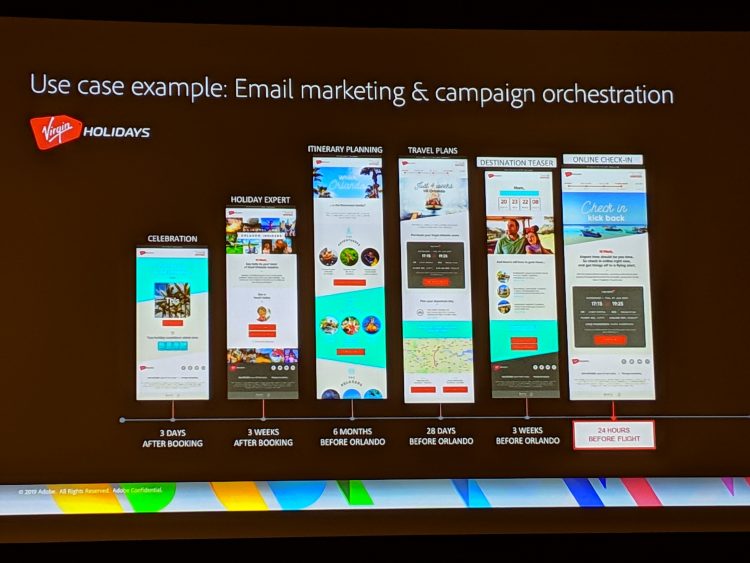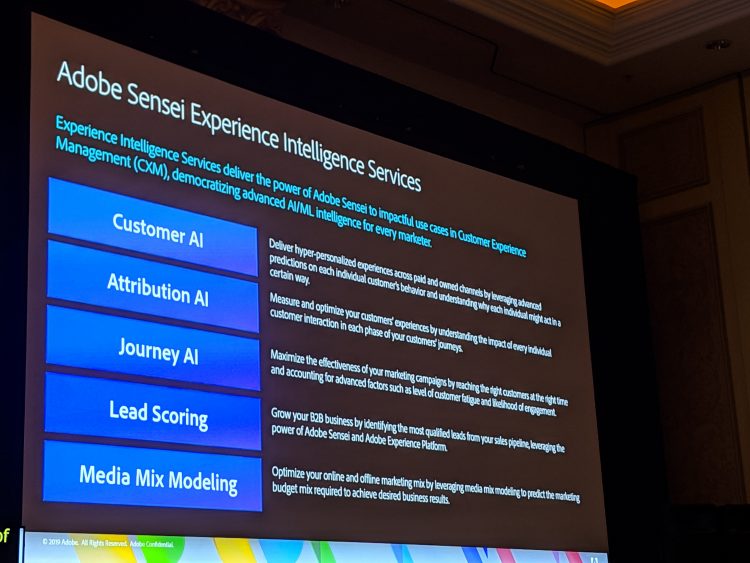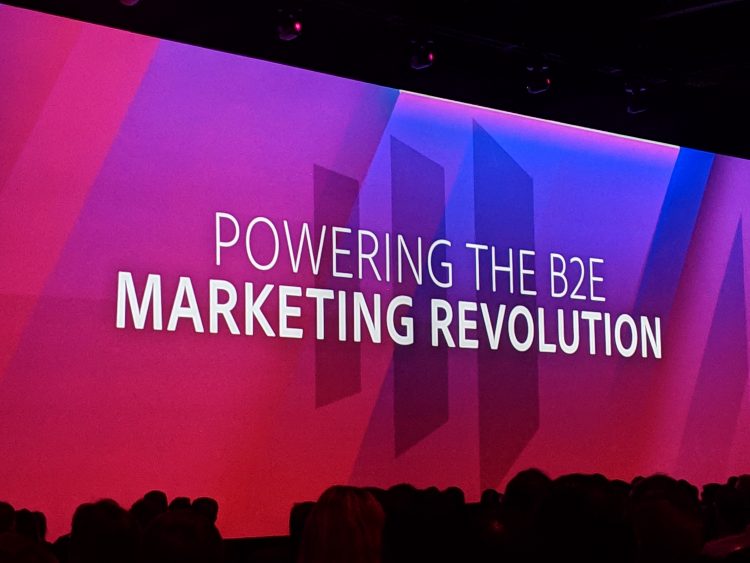President and Cofounder, Partner
Orchestration of Digital Experiences: What I Retained From Adobe Summit 2019
President and Cofounder, Partner
Our team went to Adobe Summit 2019 to discover what’s new to look for in the coming year.
Adobe Summit is an exciting, larger than life event. Nearly 17,000 people coming together in Vegas to discover new trends and visions in production, marketing and digital transformation essentials is impressive enough. When you throw in special guests like Satya Nadella, CEO of Microsoft, and Best Buy CEO Hubert Joly, you know you’re lucky enough to be at a major league event. All the more so because this past year was a huge one for Adobe with the purchase of Magento and Marketo, notable acquisitions that made shareholders clearly happy, and market capitalization of the company has never done so well.
Aside from inspiring conferences, client case studies and super concrete hands-on labs, what were the key things to retain from Adobe Summit 2019? Well, Adobe is clearly looking to prove that it’s the leader in digital transformation software for customer experience by showing the growth from theory to practice. The expression from the Summit that marked me the most was unquestionably “THE ORCHESTRATION OF DIGITAL EXPERIENCES.”

Experience before price
Adobe really hammered home this (not terribly) new market reality. They’re right. It’s true that price is becoming an increasingly important aspect of many retailers’ marketing strategies. But it’s also true that many brands take a much more subtle and probably (certainly) more profitable approach than just constantly lowering prices. Being constantly discounted has a negative impact on your profit in the short term, on your brand in the medium term, and what’s more, some brands have demonstrated that the experience is often more important than the price. For example, Uber shows you a price estimate, then nothing while you’re in transit, then emails you a receipt at the end of your ride. In short, they do whatever they can to ensure that the customer isn’t constantly thinking about what their route will cost them as they drive. Customers readily accept this, probably because the experience is such a positive one (frictionless payment, rating system that incites drives to behave irreproachably, etc.). This, I believe, is what Adobe is talking about. If we apply this concept to the digital world, a good experience would equate to a relevant offer, sent with good timing, to the right customer, accompanied by impeccable service.
A fairly impressive example that Adobe presented is the ability to show, on a physical display, a pair of shoes a customer showed an interest in online, and that are in stock in the warehouse in their size.
In my opinion, that’s a pretty great example of a memorable digital experience. And to tell the truth, like many, I am not super excited in general by what’s happening in augmented reality right now. This impresses me much more.
Powerful digital experiences enabled by technology
Obviously, all this requires technology. Which Adobe sells. So of course, this was one of the featured topics. The star was probably Adobe Sensei, an artificial intelligence module that was omnipresent in all the demos. For example:
- To predict the response rate of customers you’ve sent personalized emails to using Adobe Campaign;
- To choose the segments with the highest propensity to purchase, in order to push ads to them via Adobe Advertising Cloud (Adobe’s DSP);
- Or to determine what specific offer to send a potential B2B customer who has been navigating on your site for three minutes or more, using an integration of Marketo and Adobe Experience Cloud.

Of course, the demos we were shown, as convincing as they were, required a number of licences, meticulously planned implementation and sustained activation.
Orchestration is everything
Orchestration is exactly that. Once a solution has been correctly implemented in a company’s ecosystem, the fun begins. That’s when technologies, processes and people start their dance. Orchestration is the synergy between instruments (tools) and musicians (people) that need to align their efforts to form a symphony (strategy and process).
Without this perfect, rigorous and evolving harmony, the best software on the planet is like a single guitar in its case in the back of the closet, though significantly more expensive.
It is often said that big ideas don’t survive their execution. Adobe clearly feels the same way, as they spent a tremendous amount of time showing us how well-organized clients are able to achieve orchestration, and therefore impressive results. These clients collaborate effectively with their partners, have meticulous processes and take an approach of continual experimentation. They also generally have a coherent technology ecosystem, resulting from a lascivious and intense dance between the people in marketing and technology.

The feeling I got at the Summit was that theory, big concepts and ideas collecting dust on the shelf are behind us. We are entering an era where decision-makers have understood the importance of digital transformation, where software has achieved a certain maturity, where qualified human resources are available and where use cases are clearer and clearer.
Our will is the greatest accelerator (or the greatest obstacle) of powerful digital experiences that engage customers. To conclude, I’d like to borrow a slogan from Nike: Just do it!

.jpg)






